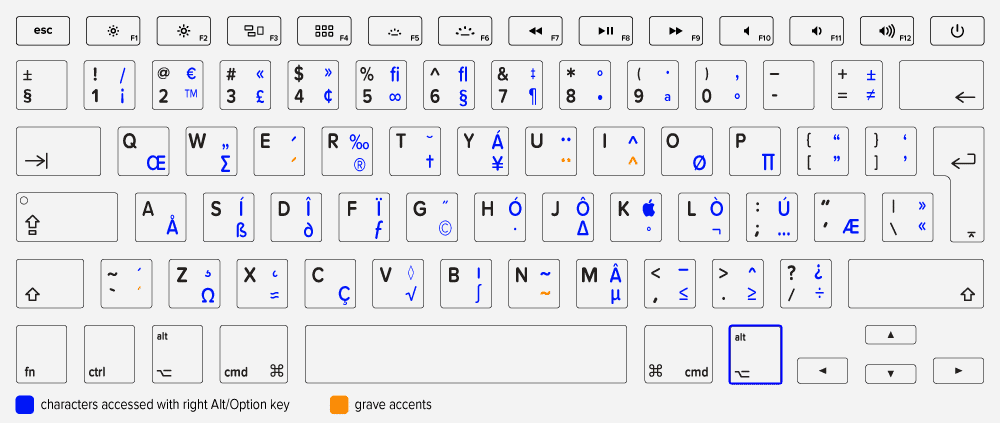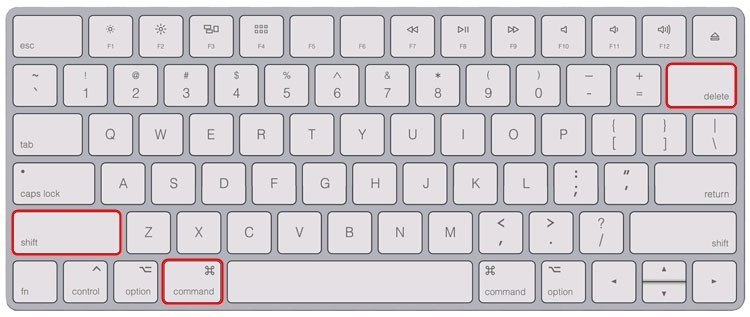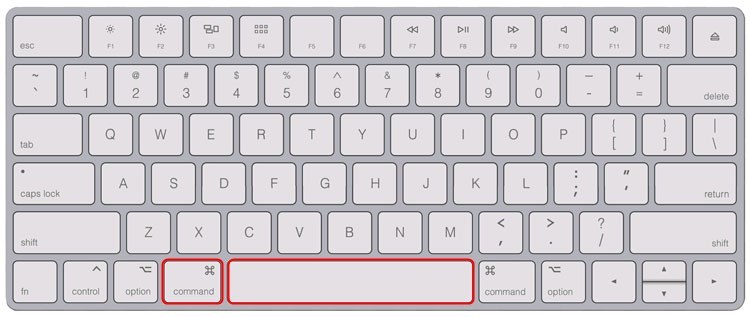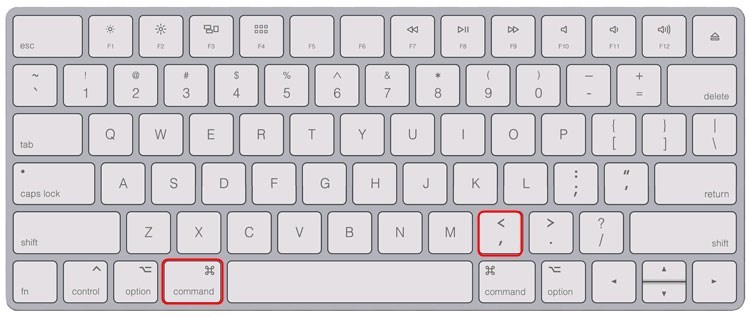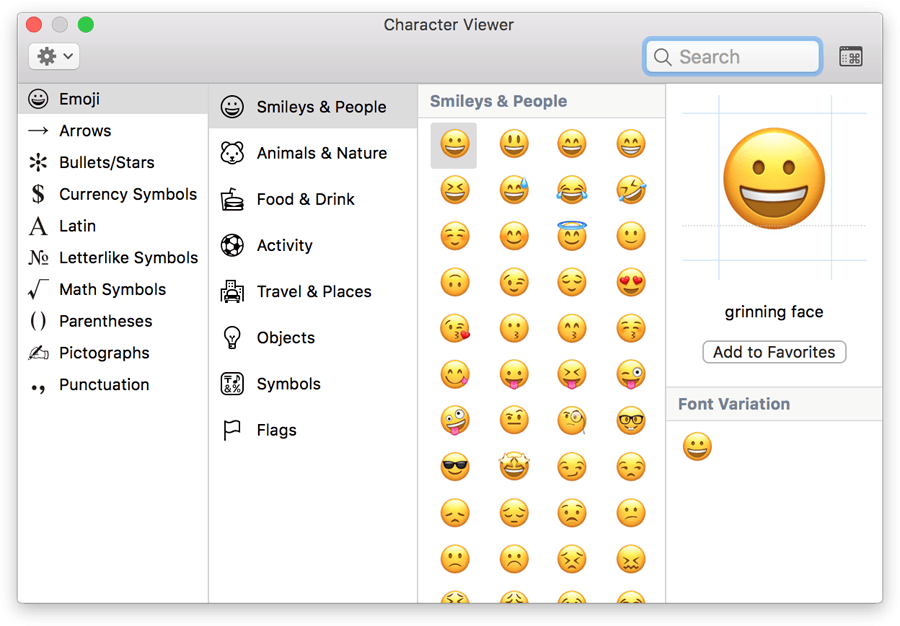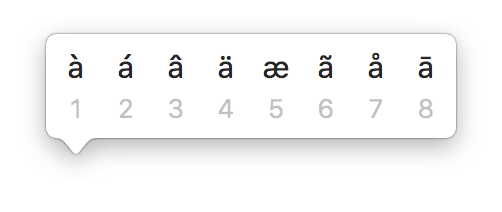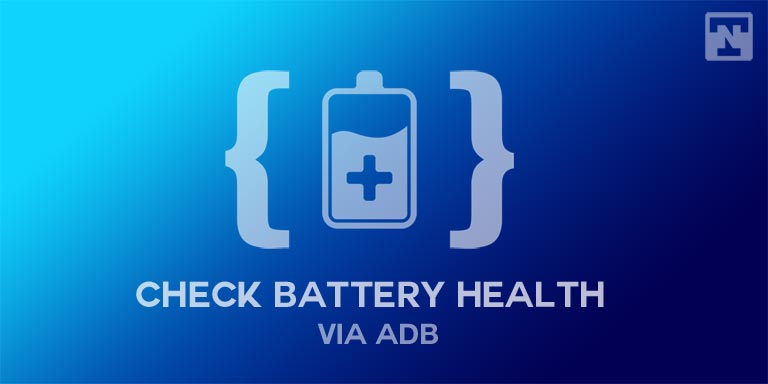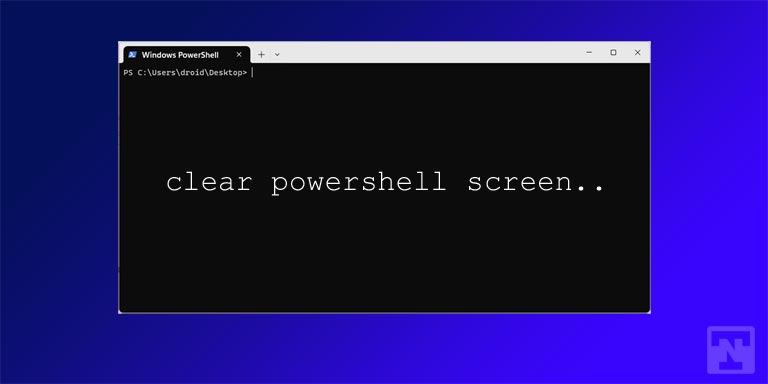If you are a macOS user with an iMac or MacBook Pro, we have a bunch of keyboard shortcuts, symbols, and keyboard tips and tricks to help you get things done quicker like a pro. All macOS keyboard shortcuts involve the use of Command ⌘, Option (Alt) ⌥, Control ⌃, Shift ⇧, and Fn (or Function) keys to perform actions quickly. Besides, you can also download our list of Mac keyboard shortcuts cheat sheet as a PDF below.
We have compiled useful keyboard shortcuts for a range of operating systems in the past. You should also check them out as well.
- Windows 10 keyboard shortcuts
- Chrome OS keyboard shortcuts
- Google Chrome keyboard shortcuts
- Linux keyboard shortcuts
- Google Chrome keyboard shortcuts for Mac
Below, I’ll be listing more than 300 keyboard shortcuts for macOS that will simplify your experience. For the sake of convenience, we have grouped our collection of Mac keyboard shortcuts into several categories.
macOS Keyboard Symbols Chart
We often need to use some special characters and symbols while writing. While you can easily access the complete range of emojis, special characters, and symbols by using the Command + Control + Space keyboard shortcut, there is a quicker way to type a plethora of symbols directly using your Mac keyboard.
Below is a macOS keyboard symbols chart that shows the symbols and special characters you can type using the keyboard. I have highlighted the special characters in blue color that can be typed using the right Alt or the Option key + the key that corresponds with your desired symbol. For instance, if you want to type the copyright sign (©), you can press Option + G on your Mac keyboard.
Basic macOS Keyboard Shortcuts
Here are some of the popularly known and handiest keyboard shortcuts for macOS from various categories.
- Command + 0: Revert to actual zoom size.
- Command + 9: Zoom to fit.
- Command + A: Select or highlight all items in the front window.
- Command + C: Copy the selected item to the clipboard.
- Command + Control + D: See the definition of the highlighted word in the Dictionary app.
- Command + Control + Delete: Define the highlighted word.
- Command + Control + Power: Restart your iMac or Mackbook without confirmation.
- Command + Delete: Move the selected item to Trash.
- Command + E: Copy the selected text for use with the Find function.
- Command + F5: Turn VoiceOver on or off.
- Command + F: Find
- Command + G: Having found items using the Command+F shortcut, you can use this to navigate through each found item.
- Command + Minus(-): Zoom out.
- Command + Option + Space: Open Spotlight Finder Search Window.
- Command + Spacebar: Show/hide the Spotlight search field.
- Command + Option+ F5: Show Accessibility options.
- Command + P: Print the contents of the current screen.
- Command + Plus(+): Zoom in.
- Command + Q: Quit
- Command + S: Save a file.
- Command + Shift + Delete: Empty Trash.
- Command + Shift + Option + Delete: Empty the Trash without confirmation.
- Command + Shift + P: Display the dialog box showing page setup parameters for printing.
- Command + Space: Open Spotlight.
- Command + V: Paste
- Command + W: Close the window.
- Command + X: Cut
- Command + Z: Undo/Redo
- Command +M: Minimize a window.
- Command +Shift+ Z: Undo/Redo
- Control + Up arrow or F3: Open Mission Control.
- Option + Command + 8: Turn zoom on or off.
- Option + Command + Minus(-): Zoom out.
- Option + Command + Plus(+): Zoom in.
- Option + Shift + F1/F2: Increase or decrease the brightness in smaller steps.
- Option + Shift + F11/F12: Increase or decrease the volume in smaller steps.
- Command + Option + Control + Comma(,): Decrease screen contrast.
- Command + Option + Control + Fullstop(.): Increase screen contrast.
Mac Screenshot Keyboard Shortcuts
There are 3 ways you can capture a screenshot on macOS using keyboard shortcuts.
- Command + Shift + 3: Takes a screenshot of the entire screen.
- Command + Shift + 4: Takes the screenshot of a selected area of the screen or a cropped screenshot.
- Command + Shift + 4 + Spacebar + Click on the window: Takes a screenshot of a specific window.
- Command + Shift + 5: Take a screenshot or record screen (Mojave onwards).
- Command + Shift + 6: Take a screenshot of the Touchbar.
- Command + Shift + Control + 3: Capture the screen to the Clipboard.
macOS Finder Keyboard Shortcuts
Below is a huge list of useful keyboard shortcuts that you can use while using the Mac Finder.
- Command + 1: View Finder window items as icons.
- Command + 2: View Finder window items as a list.
- Command + 3: View Finder window items as columns.
- Command + 4: View Finder window items in the gallery.
- Command + Click: Open the Sidebar item in a Window.
- Command + Click the window title: See the folders that contain the currently open folder.
- Command + Comma: Open preferences for the app you are using.
- Command + Control + I: Get summarized information.
- Command + Control + Up Arrow: Go to the parent folder (opens in a new folder).
- Command + D: Duplicate the selected files.
- Command + Double-click: Open a folder in a separate window.
- Command + Up arrow: Go to the parent folder.
- Command + Down Arrow: Open a highlighted file or app.
- Command + E: Eject
- Command + H: Hide the currently active window.
- Command + I: Get Info about an item.
- Command + J: Show View Options.
- Command + K: Connect to the Server.
- Command + L: Make an alias for the selected item.
- Command + Left Bracket ([): Return to the previous folder.
- Command + Right Bracket (]): Go to the next folder.
- Command + N: New Finder window.
- Command + O: Open the selected item.
- Command + T: Show or hide the tab bar when a single tab is open in the current Finder window.
- Command + Option + A: Deselect all items.
- Command + Option + F: Go to the search field in an open Spotlight window.
- Command + Option + H + M: Hide all windows except the window in use and minimize it.
- Command + Option + H: Hide all windows except the front window.
- Command + Option + I: Access File Inspector.
- Command + Option + M: Minimize all open windows at once.
- Command + Option + T: Show or hide the Toolbar/Sidebar.
- Command + Option + W: Close all open windows.
- Command + Option + Y: View a slideshow of the selected files.
- Command + Option + dragging: Make an alias of the dragged item.
- Command + R:
- Show the original file for the selected alias in the Finder.
- Reload a page while using a web browser or Calendar app.
- Check for software updates again when the Software Update window is open.
- Command + Shift + A: Open the Applications folder.
- Command + Shift + C: Open the Computer window in Finder.
- Command + Shift + D: Open the Desktop folder.
- Command + Shift + F: Find Spotlight filename matches.
- Command + Shift + G: Go to Folder.
- Command + Shift + H: Open the Home folder.
- Command + Shift + I: Compose an email.
- Command + Shift + K: Open the Network window.
- Command + Shift + N: New folder
- Command + Shift + Option + Q: Log out instantly.
- Command + Shift + Q: Log out.
- Command + Shift + Question Mark (?): Open the Help menu.
- Command + Shift + T: Show the Tab Bar.
- Command + Shift + Tab: Cycle through applications without touching the trackpad.
- Command + Shift + U: Open the Utilities folder.
- Command + Shift + Up Arrow: Open the Computer pane in a new Finder window.
- Command + T: Open the current location in a new tab.
- Command + Up Arrow: Open the folder that contains the current folder.
- Command + dragging: Move the selected item to another location.
- Command + F3: Show or hide all open windows.
- F4: Open the Launchpad.
- Control + F3: Show the open windows for the frontmost application.
- Left Arrow (in List view): Close the selected folder.
- Right Arrow (in List view): Expand a folder.
- Option + Click the disclosure triangle (in List view): Open all folders within the selected folder.
- Option + Double-click: Open a folder in a separate window, closing the current window.
- Option + Dragging: Copy the dragged item.
- Option + Command + D: Show or hide the Dock.
- Option + Command + L: Open the Downloads folder.
- Option + Command + N: Create a new Smart Folder.
- Option + Command + P: Hide or show the path bar in the Finder window.
- Option + Command + S: Hide or show the Sidebar in Finder windows.
- Option + Command + T: Show or hide the toolbar when a single tab is open in the current Finder window.
- Option + Command + V: Move the files in the Clipboard from their original location to the current location.
- Option + Command + Y: View a Quick Look slideshow of the selected files.
- Option + Command + dragging: Make an alias of the dragged item. The pointer changes while you drag the item.
- Option + Click a disclosure triangle: Open all folders within the selected folder while in list view.
- Spacebar/Command + Y: Open Quick Look.
- Shift + Command + C: Open the Computer window.
- Shift + Command + D: Open the desktop folder.
- Shift + Command + F: Open the Recents window, showing all of the files you viewed or changed recently.
- Shift + Command + G: Open a Go to Folder window.
- Shift + Command + H: Open the Home folder of the current macOS user account.
- Shift + Command + I: Open iCloud Drive.
- Shift + Command + K: Open the Network window.
- Shift + Command + N: Create a new folder.
- Shift + Command + O: Open the Documents folder.
- Shift + Command + P: Show or hide the Preview pane in Finder windows.
- Shift + Command + R: Open the AirDrop window.
- Shift + Command + T: Show or hide the tab bar in the Finder window.
- Shift + Command + U: Open the Utilities folder.
- Shift + Minimize Window: Minimize a window in slow motion.
Don’t Miss: How to Find the Path of a File or Folder on Mac
Startup, Shut down & System Shortcuts
Whether you want to start up or shut down your Mac or just do other things by using keys, the following keyboard shortcuts will come in handy.
- C: Start from bootable media (DVD, CD, USB device, etc.)
- D: Start Apple Hardware Test.
- N: Start from the NetBoot server
- T: Start in FireWire target disk mode.
- X: Force MacOS startup.
- Power button:
- Press to turn on your Mac or wake it from sleep.
- Press and hold the Power key for 1.5 seconds to put your Mac to sleep.
- Hold down the Power button for more than 3 seconds to force your Mac to turn off.
- Shift: Press the Shift key while booting to perform a Safe Boot or boot into the Safe Mode.
- Command + Option + P + R: Reset PRAM or NVRAM.
- Command + R: Use Recovery.
- Command + S: Boot into the Single User Mode.
- Command + V: Start in the Verbose Mode.
- Control + Command + Q: Lock the screen.
- Control + Command + Media Eject: Exit all apps and restart your Mac.
- Control + Option + Command + Power button: Quit open apps and shut down the computer.
- Control + Option + Command + Media Eject: Close apps and shut down your Mac.
- Control + Option + Space bar: Toggle through enabled input sources.
- Control + Command + Power button: Force restart your Mac.
- Control + Power button: Show options like restart, sleep, or shut down in a dialog box.
- Control + Media Eject: Open the restart, sleep, or shut down dialog box.
- Control + Shift + Power button: Make your Mac sleep.
- Control + Shift + Eject: Put display to sleep.
- Hold down the F12 or Eject key: Eject the removable disc.
- Left Shift: Prevent automatic login.
- Option: Press this key while booting to open Startup Manager.
- Option + Command + Power button: Put your Mac to sleep.
- Option + Command + Media Eject: Put your computer to sleep.
- Option-Shift-Command-Q: Log out of your macOS user account immediately without confirmation.
- Shift + Command + Q: Log out of your macOS user account.
- Command + Shift + Option + Esc: Force Quit the current application.
- Command + Shift + C: Open the Colors window.
macOS Dock Keyboard Shortcuts
Using the following Mac keyboard shortcuts, you can perform various actions related to the Dock.
- Command + Click on a Dock icon: Show the location of a Dock item in the Finder.
- Command + M: Minimize the active window to the Dock.
- Command + Option + M: Minimize all open windows to the Dock.
- Command + Option: Click an app icon in the Dock to hide all apps except the app you clicked.
- Command + Plus(+) or Command + Minus(-): Increase or decrease the size of icons in a Dock app stack.
- Hold Command + Option and drag a file to an app’s icon in the Dock: Force an app to open a specific type of file.
- Hold Control + Shift: Turn magnification on or off temporarily.
- Hold Shift + Drag Dock divider: Move the Dock to the left, right, or bottom edge of the screen.
- Hold the Option key in the Dock menu: Change the Dock menu’s Quit option for an app to Force Quit.
- Option + Click another app: Hide the app you are leaving from the Dock.
- Option + Command + D: Show or hide the Dock.
Safari Browser Keyboard Shortcuts for Safari
You can use the following Mac keyboard shortcuts to do a host of things while using the Safari browser.
- Shift + Click a Link: Add a webpage to the Reading List.
- Press Escape/Command + Full stop(.): Cancel the current Find.
- Command + Up/Down arrow: Scroll to the top-left or bottom-left corner of a webpage.
- Command + Comma(,): Change Safari preferences.
- Command + Left Bracket([): Return to the previous webpage.
- Command + Right Bracket(]): Go to the next webpage.
- Command + D: Bookmark a webpage. You can also save a webpage as a PDF on iOS or macOS.
- Command + L: Highlight the Search Field or URL.
- Command + F: Search the active web page.
- Command + F + Enter text and press the following keys to navigate between found items-
- Return: Move forward.
- Shift + Return: Move backward.
- Command + T: Open a new tab in Safari.
- Command + W: Close the current tab.
- Command + Z: Reopen the last closed tab.
- Command+ Option + W: Use this combination and click the close button (X) on the Safari tab you want to keep open to close all other tabs except one.
- Command + Click a link: Open the link in a new Safari tab.
- Command + Shift + B: Show or hide the favorite bookmarks bar below the URL field in Safari.
- Command + Shift + Click a link: Open the link in a new tab in the foreground.
- Command + Option + Shift + Click a link: Open the link in a new browser window.
- Command + W: Close the active tab in the browser.
- Command + Plus(+)/Minus(-): Zoom a website’s content in or out.
- Command + Up arrow + L: Go to the Address bar directly.
- Option/Shift + Spacebar: Scroll up a screen. You can also use the Page Up and Down keys for this purpose.
- Up/Down arrow: Scroll up and down.
- Left/Right arrow: Scroll left and right
- Hold down the Back key: See a list of recently visited pages by name.
- Press Option + Hold down the Back or Forward key: See a list of your recently visited pages by the web URL.
- Shift + Command + \: Show tab overview.
- Shift + Command + D: Add the current webpage to your reading list.
- Shift + Command + H: Go to the homepage.
- Shift + Command + R: Open Reader.
- Shift + Command + T: Reopen the last Safari tab you closed.
- Spacebar/Option + Up arrow: Scroll up a webpage by one full-screen.
- Spacebar/Option + Down arrow: Scroll down a webpage by one full-screen.
- Command + 1, Command + 2, and so on: You can use Command + 1-9 to switch between the first 9 Tabs in the Safari browser.
- Control + Tab or Command + Shift + Right Arrow: Switch to the Next Tab.
- Control + Shift + Tab or Command + Shift + Left Arrow: Switch to the Previous Tab.
- Control + Command + 1: Show or Hide the Bookmarks sidebar
- Tab: Highlight the next field on a webpage.
- Option + Tab: Highlight the next field and clickable items and links on a webpage.
Text and Document Keyboard Shortcuts
You can make use of the following keyboard shortcuts while editing text to get things done like a pro.
- Option + Esc: Open the list of suggested words and enable auto-completion while typing a word.
- Option + Delete: Delete the entire word to the left.
- Command + J: Scroll to the selected text.
- Command + T: Display the Fonts window.
- Command + Option + Slash(/): Turn font smoothing on or off.
- Command + Control + Space: Use this keyboard shortcut to launch the macOS Emoji and symbols panel. You can then select and category and insert emojis, symbols, and special characters into your text.
- Hold a key: Doing so will show you a pop-up with a variety of alternate or special characters of the key you press. For example, if you hold the A key, you will be able to choose from its variations, such as à, á, â, ä, å, etc. You can insert the desired character by pressing the corresponding number key given below each character.
- Command + Up arrow: Jump to the beginning of the whole text.
- Command + Down arrow: Go to the end of the whole text.
- Command + Left arrow: Go to the beginning of the current line.
- Command + Right arrow: Go to the end of a line.
- Command + Control+ D: Look up a word in the dictionary.
- Mouse cursor + 3-Finger Tap on a Word: Look for a word in the dictionary.
- Command + Drag: Select text.
- Command + Shift + Left arrow: Select text between the cursor position and the beginning of a line.
- Command + Shift + Right arrow: Select text between the cursor position and the end of a line.
- Command + Shift + Up arrow: Select text between the cursor position and the beginning of a document.
- Command + Shift + Down arrow: Select text between the cursor position and the end of a document.
- Command + Shift + S: Duplicate a document. Works like the Save As… option.
- Option-Command-I: Show/hide the inspector window.
- Option + Drag: Select the text located in non-linear areas.
- Option + Left arrow: Go to the beginning of the previous or current word.
- Option + Right arrow: Go to the end of the current or next word.
- Option + Command + C: Copy the style settings of the selected text.
- Option + Command + V: Paste or apply the copied text style settings to the selected item.
- Option + Shift + Command + V: Paste and match the style.
- Function(Fn) + Delete: Delete the text to the right of the cursor (on Macbook). The shortcut works like the Del key found on the full-fledged keyboards.
- Function(Fn) + Up arrow: Page Up or scroll up one page.
- Function(Fn) + Down arrow: Page Down or scroll down one page.
- Function(Fn) + Left Arrow: Scroll to the beginning of a document.
- Function(Fn) + Right Arrow: Scroll to the end of a document.
- By using the following keyboard shortcuts, you can switch to the Outline Mode while using the TextEdit app. Just press-
- Option + Tab: Turn the current line into a list item.
- Return: Create a new list item.
- Return (2 times): Decrease the indent in the current list.
- Shift + Tab: Remove a level of indention.
- Tab at the start of a blank list item: Indent and create a sublist.
- Control + A: Move to the beginning of the line or paragraph.
- Control + B: Move backward one character.
- Control + F: Move forward one character
- Control + E: Move to the end of a line or paragraph.
- Control + K: Delete the text from the current cursor position to the end of the line.
- Control + L: Center the cursor or selection in the visible area.
- Control + H: Delete the character on the left.
- Control + D: Delete the character on the right.
- Control + N: Move down one line.
- Control + P: Move up one line.
- Control + O: Insert a new line after the insertion point.
- Control + Tab: Move focus to the next grouping of controls in a dialog or the next table (when Tab moves to the next cell)
- Control + Up/Down/Left/Right arrow: Move focus to another value or cell in a table.
- Shift + Command + Colon (:): Display the Spelling and Grammar window.
- Command + Semicolon (;): Find misspelled words in a document.
- Shift + Command + Plus(+): Increase the size of the selected text.
- Shift + Command + Minus(-): Decrease the size of the selected text.
- Shift + Command + Question mark(?): Display the Help menu.
- Shift + Up arrow: Extend text selection to the line above.
- Shift + Down arrow: Extend text selection to the line below.
- Shift + Left arrow: Extend text selection one character to the left.
- Shift + Right arrow: Extend text selection one character to the right.
- Shift + Option + Up arrow: Extend text selection to the beginning of the current paragraph. You can repeat the shortcut to select more paragraphs.
- Shift + Option + Down arrow: Extend text selection to the end of the current paragraph.
- Shift + Option + Left arrow: Extend text selection to the beginning of the current word.
- Shift + Option + Right arrow: Extend text selection to the end of the current word.
Text Formatting and Alignment Shortcuts
You can use the following keyboard shortcuts to align and stylize text in a document on macOS.
- Command + B: Make the selected text Bold.
- Command + I: Italicize the selected text.
- Command + U: Underline the selected text.
- Command + Backslash(\): Align center.
- Command + [: Align left. You can also use Command + Shift + [ to left-align the selected text.
- Command + ]: Align right.
- Command + {: Align left.
- Command+ }: Align right.
- Shift + Command + Vertical bar (|): Align center.
- Command + Shift + Backslash (\): Justified
- Command + Shift + B: Bold
- Command + Shift + I: Italics
- Command + Shift + P: Plain
- Command + Shift + U: Underline
- Command + Shift + Hyphen(-): Subscript
- Command + Shift + Equals(=): Superscript
- Option + Shift + >: Increase text size by one point.
- Option + Shift + <: Decrease text size by one point.
- Shift + >: Set the next greater font size in the menu.
- Shift + <: Set the next smaller font size in the menu.
Keyboard Shortcuts for Stocks App on Mac
For those who are interested in stock market updates and business news, Mac has a dedicated app called Stocks to keep you updated with finance-related information. You can access the Stocks app on macOS as follows:
- Click the Finder icon in the Dock.
- When the Finder window is launched, click Applications in the sidebar.
- Now, double-click the Stocks app o launch it.
Using the following keyboard shortcuts and gestures, you can navigate the Stocks app more efficiently.
- Command + click: Open in a new tab.
- Command + Minus(-): Zoom out.
- Command + Plus(+): Zoom in.
- Shift + Command + Zero(0): Revert to the actual size.
- Command + N: Open a new window.
- Command + Q: Quit Stocks.
- Command + R: Refresh the content.
- Command + S: Save or remove the selected story.
- Command + T: Open a new tab.
- Command + W: Close the window or tab.
- Command + Up Arrow: Go to the top.
- Command + Down Arrow: Go to the bottom.
- Command + [: Go back.
- Control + Shift + Tab: Show the previous tab.
- Control + Tab: Show the next tab.
- Delete: Remove the selected symbol from the watchlist.
- Up Arrow: Select the previous item in the sidebar.
- Down Arrow: Select the next item in the sidebar.
- Left Arrow: Display the previous story in the newsfeed.
- Right Arrow: Display the next story in the newsfeed.
- Enter/Return: Open the selected story.
- Option + Command + F: Search to add a symbol.
- Option + Command + Plus(+): Increase the text size.
- Option + Command + Minus(-): Decrease the text size.
- Option + Command + S: Show or hide the sidebar.
- Option + Command + W: Close other tabs except for the active one.
- Option + Shift + Command + W: Close all windows.
- Option + Shift-Command + click: Open in a new window and make it active.
- Shift + Command + W: Close the window and all its tabs.
- Shift + Command + \: Show all tabs.
- Shift + Command + click: Open in a new tab and make it active.
- Shift + Tab: Move focus from the news feed to the sidebar.
- Spacebar: Page up.
- Shift + Spacebar: Page up.
- Tab: Move from the sidebar to the newsfeed.
Download macOS Keyboard Shortcuts PDF
It’s very easy to bookmark this webpage for future reference using Command + D, or add it to your reading list with the Shift + Command +D shortcut. However, if you want the full list of Mac keyboard shortcuts cheatsheet as a PDF file, you can download it below.
I have tried to be as much inclusive as possible while compiling the above list of Mac keyboard shortcuts and symbols. In case you think I have missed something, please let me know.
Reference: Apple support page
